Beautiful animations help illuminate the power of creative placemaking
Creative placemaking in transportation is an emerging, powerful way to integrate artists to deliver transportation projects more smoothly, improve safety, and build community support. But the practice can also be difficult to describe with words alone, so we commissioned an artist to illustrate the concepts visually.
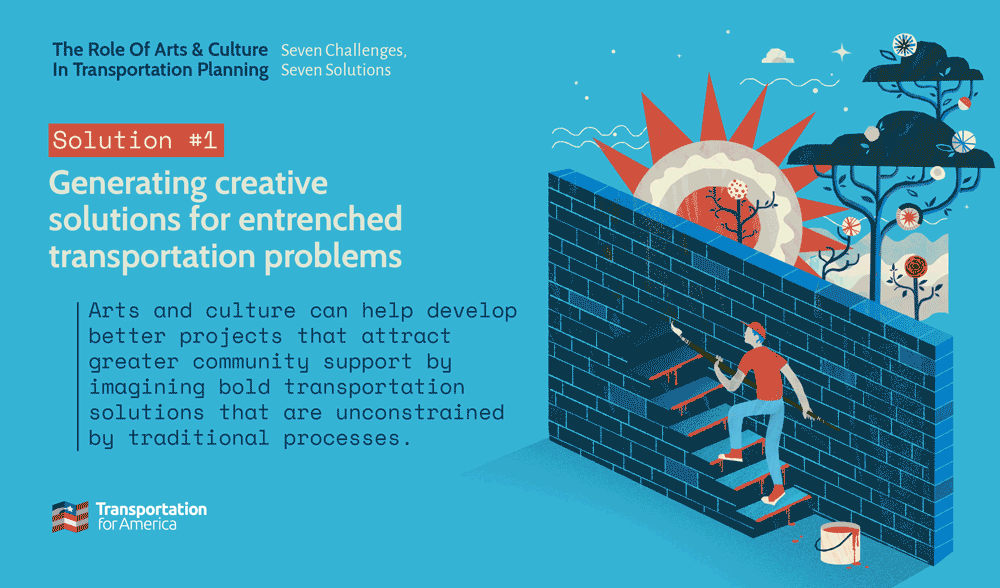
Earlier this year we released a rigorous national examination of creative placemaking in the transportation planning process, in partnership with ArtPlace America. This Creative Placemaking Field Scan identifies seven of the most pressing challenges facing the transportation sector today, and identifies how arts and culture contribute to solutions.
Words are always good, but visuals are better. To make creative placemaking just a bit easier to understand — and put our money where our mouth is when it comes to the power of arts and culture — we tapped a talented visual artist to create a handful of illustrations. Check out these beautiful animations, and please feel free to share them with others. (You can find the first one to share on Facebook here.)
Seven challenges and seven solutions
The field scan explores seven of the most pressing challenges facing the transportation sector today, and identifies how arts and culture contribute to solutions.
1. Generating creative solutions for entrenched transportation problems.

Arts and culture can help develop better projects that attract greater community support by imagining bold transportation solutions that are unconstrained by traditional processes.
More on solution #1: Read the El Paso, TX case study from the field scan, published on the blog as a preview during Arts & Culture month.
2. Making streets safer for all users.
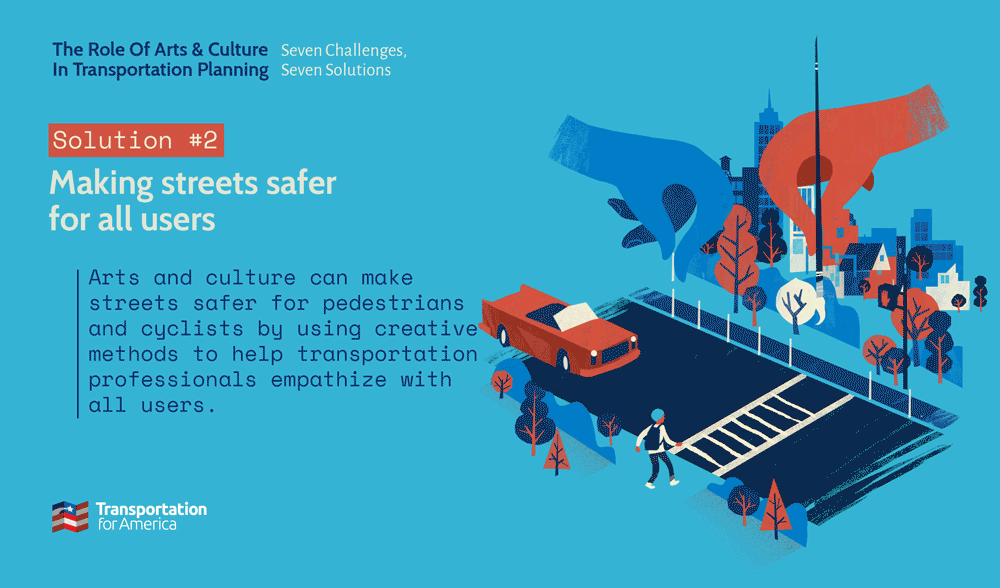
Arts and culture can make streets safer for pedestrians and cyclists by using creative methods to help transportation professionals empathize with all users.
3. Organizing transportation advocates.
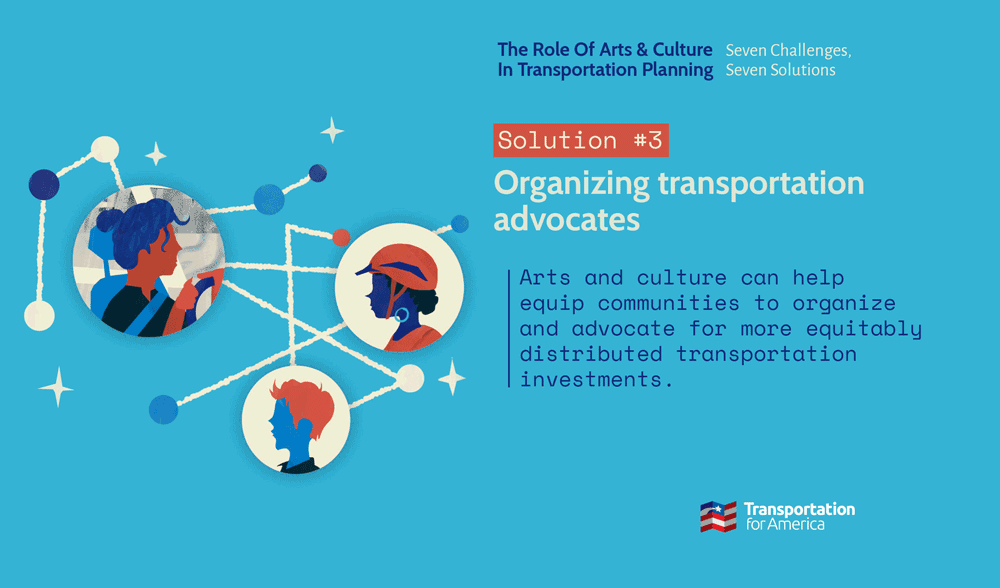
Arts and culture can help equip communities to organize and advocate for more equitably distributed transportation investments.
4. Engaging multiple stakeholders for an inclusive process.
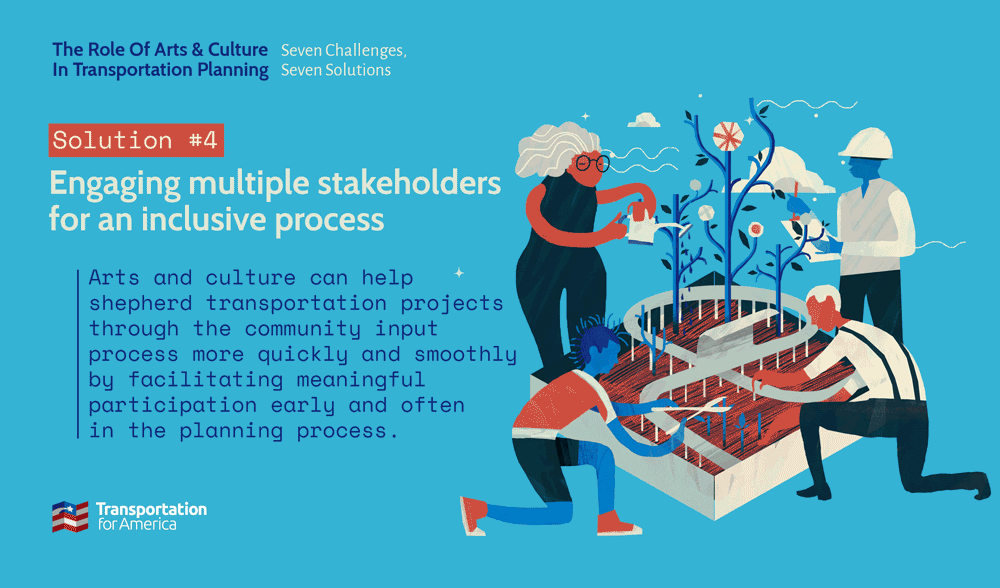
Arts and culture can help shepherd transportation projects through the community input process more quickly and smoothly by facilitating meaningful participation early and often in the planning process.
More on solution #4: Read the Jade/Midway case study from the field scan, published on the blog as a preview during Arts & Culture month.
5. Fostering local ownership.
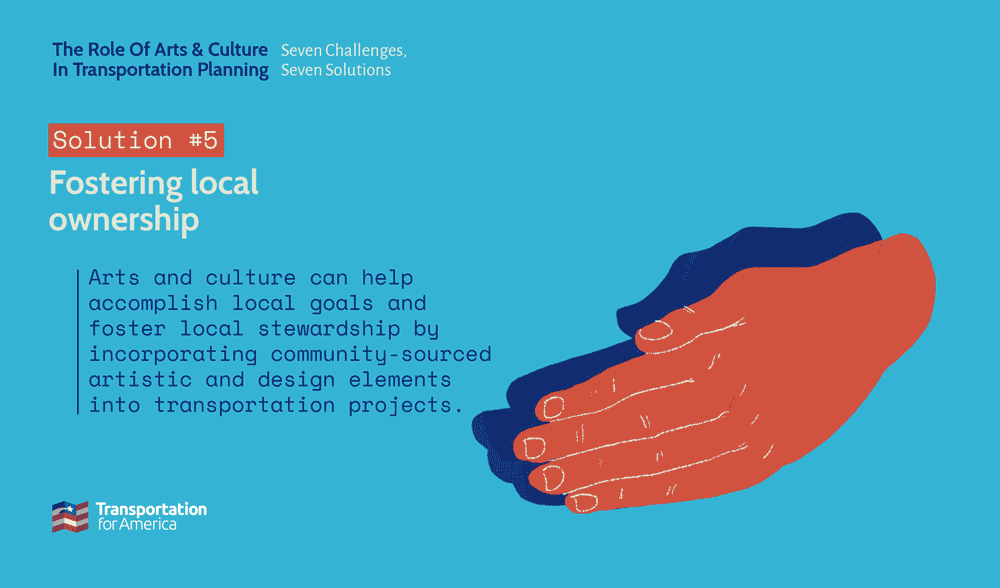
Arts and culture can help accomplish local goals including improving health, encouraging walking and biking, or increasing transit ridership by incorporating community-sourced artistic and design elements into transportation projects to foster local stewardship and use.
6. Alleviating the disruptive effects of construction.
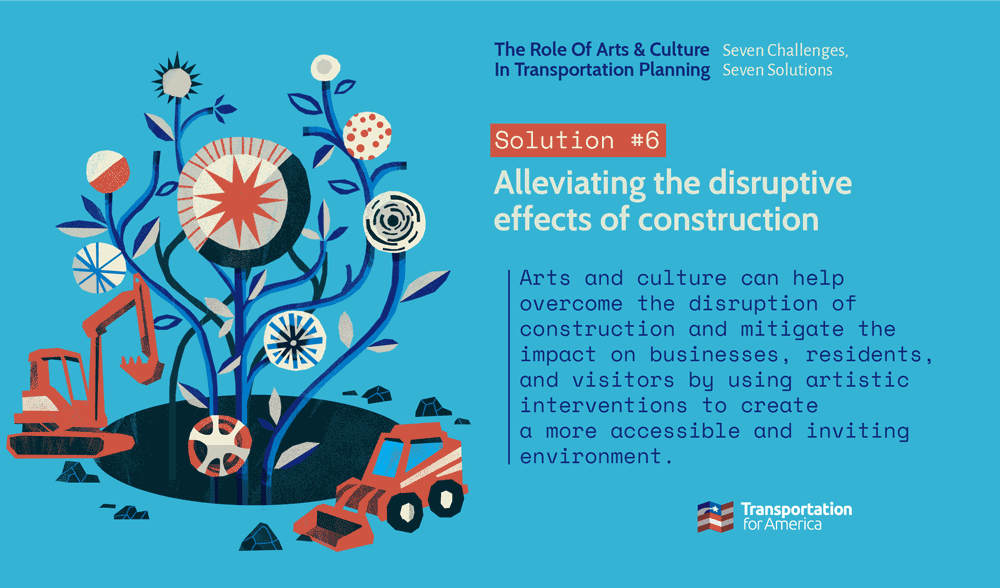
Arts and culture can help overcome the disruption of construction and mitigate the impact on businesses, residents, and visitors by using artistic interventions to create a more accessible and inviting environment.
More on solution #6: Read the Irrigate case study from the field scan, published on the blog as a preview during Arts & Culture month.
7. Healing wounds and divisions.
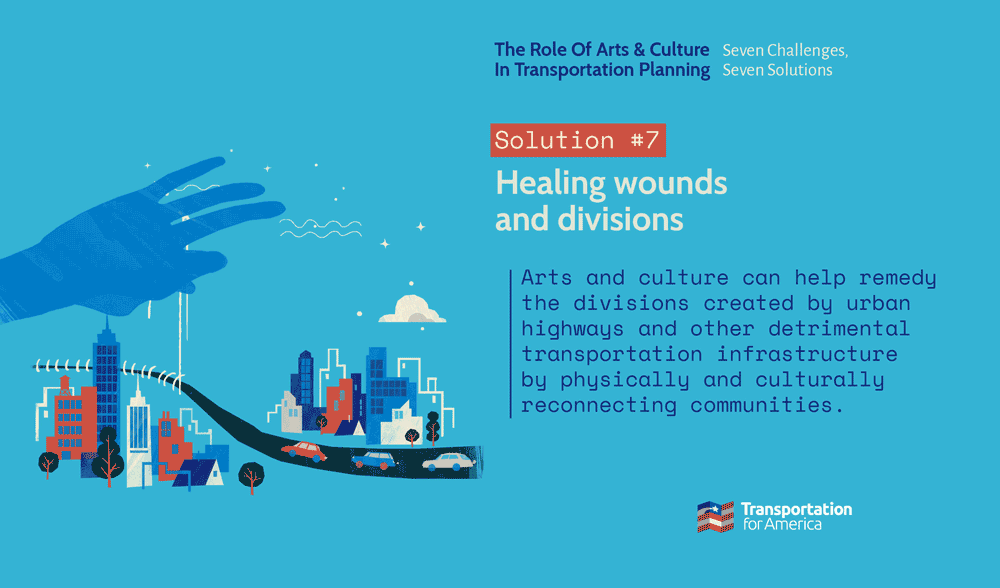
Arts and culture can help remedy the divisions created by urban highways and other detrimental transportation infrastructure by physically and culturally reconnecting communities.
READ THE FIELD SCAN
All illustrations by Noah Macmillan. http://noahmacmillan.com/



















